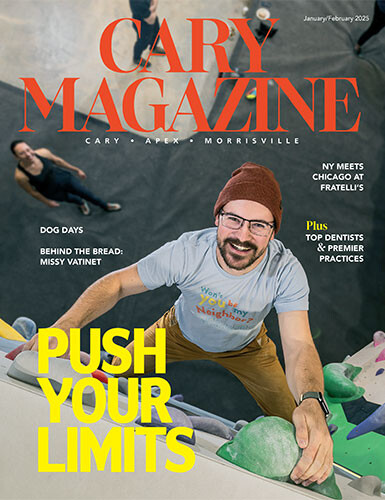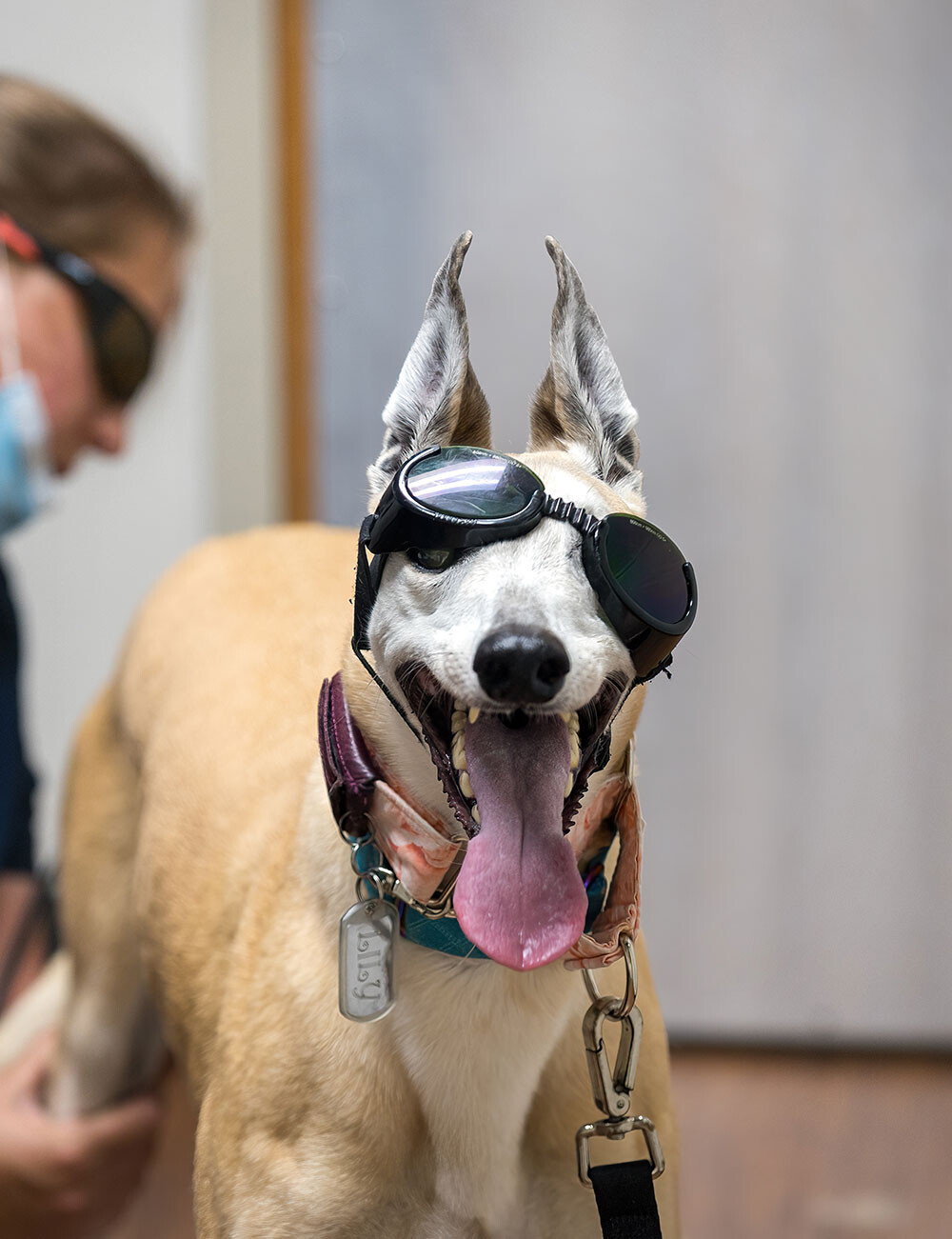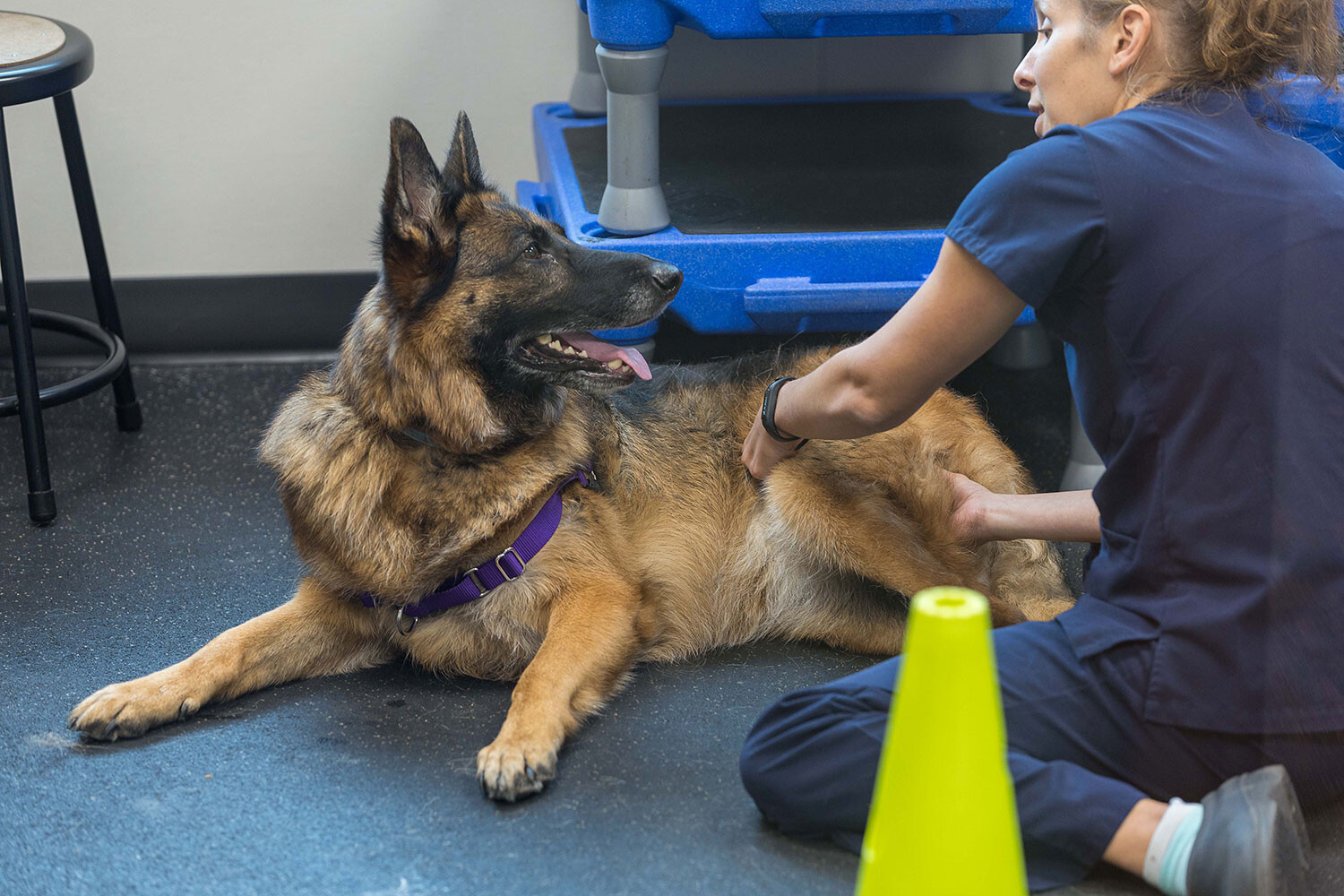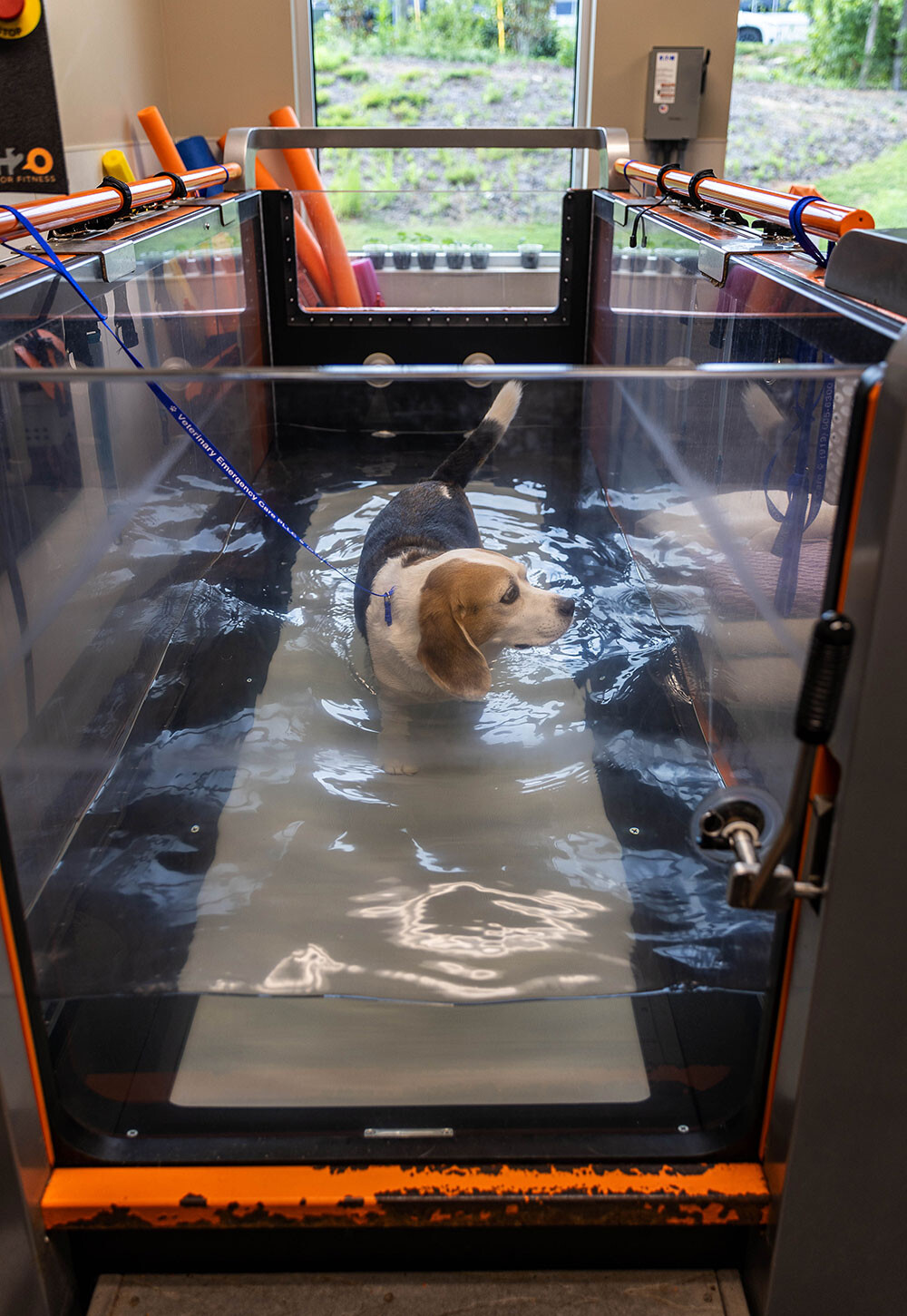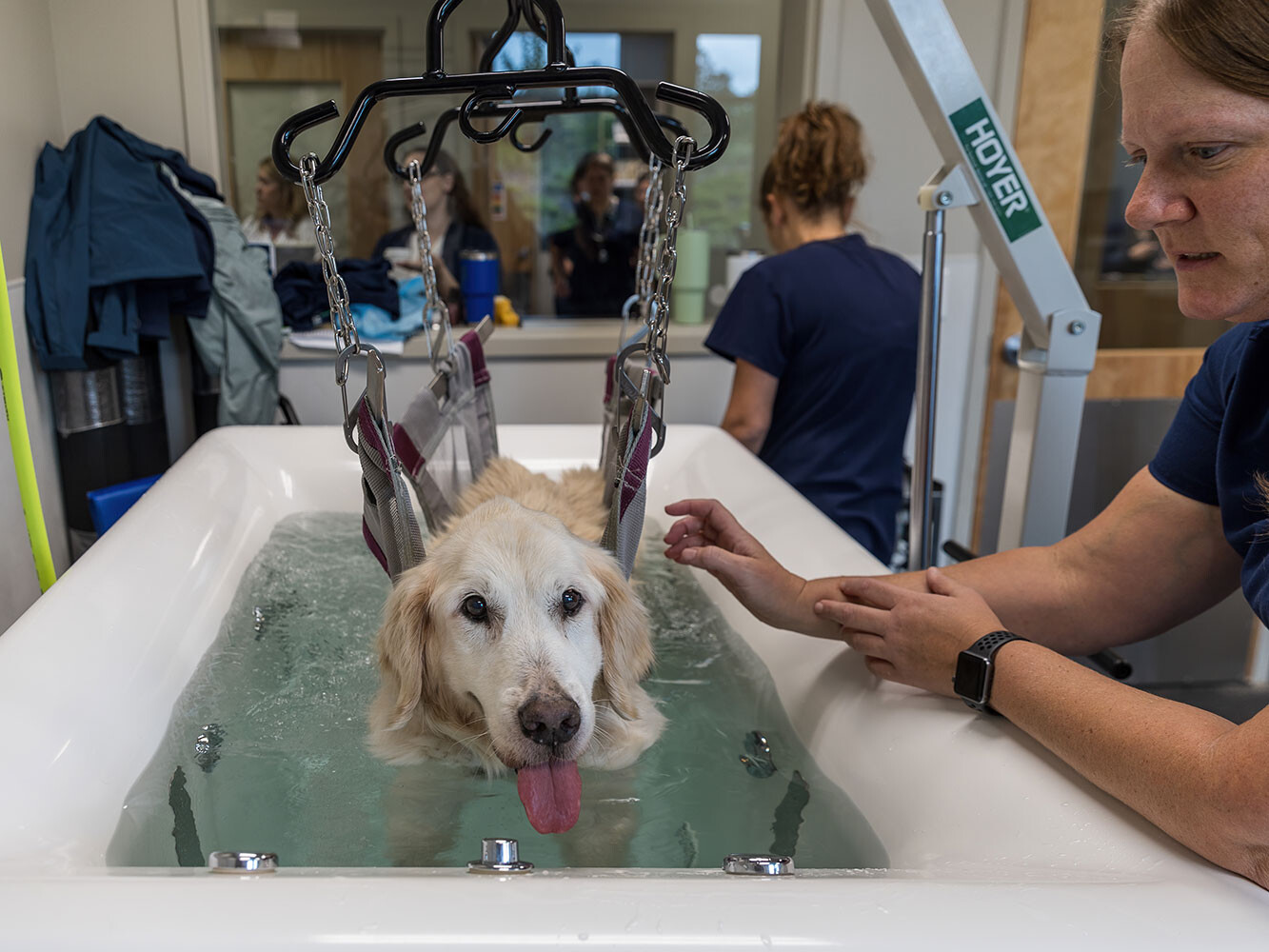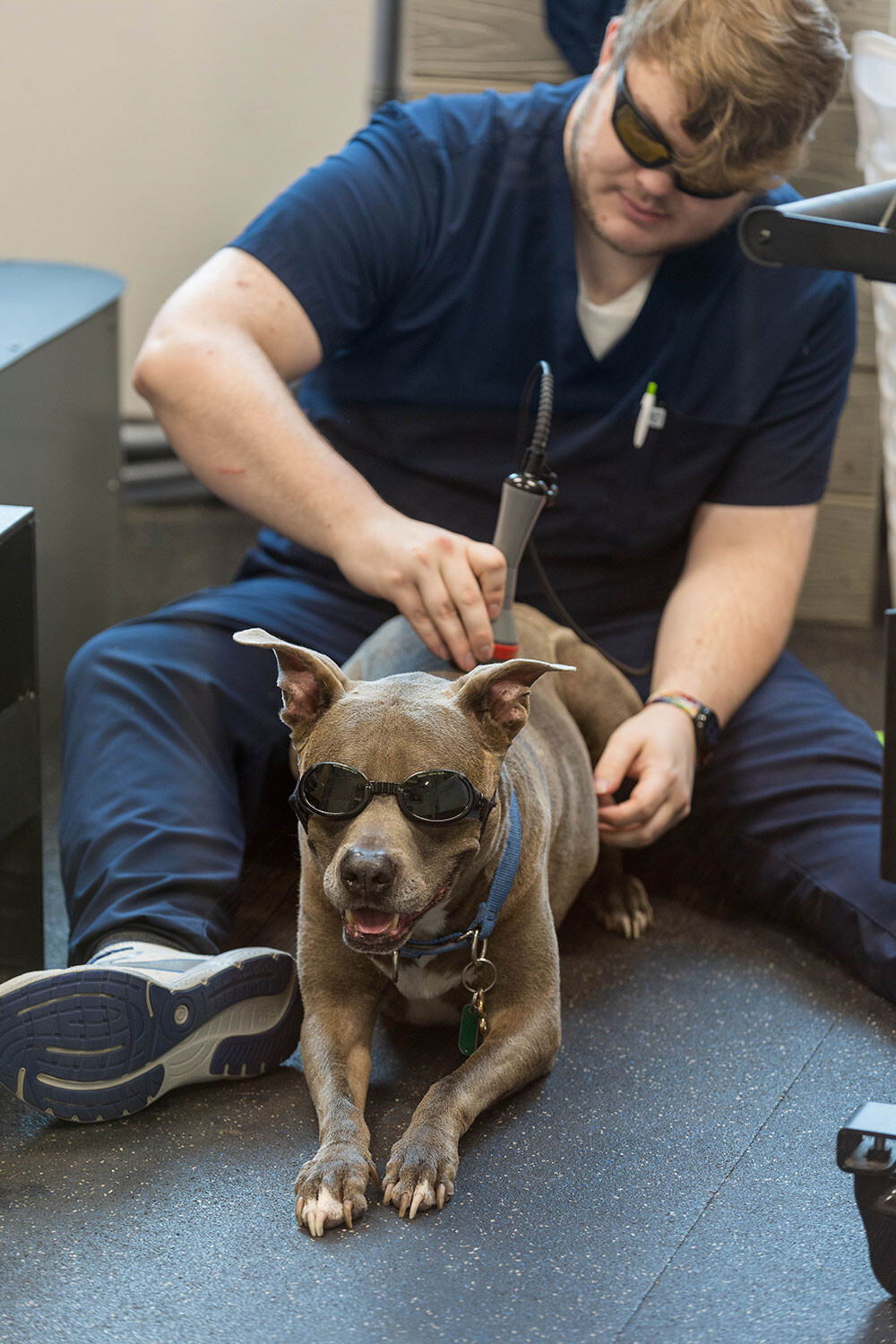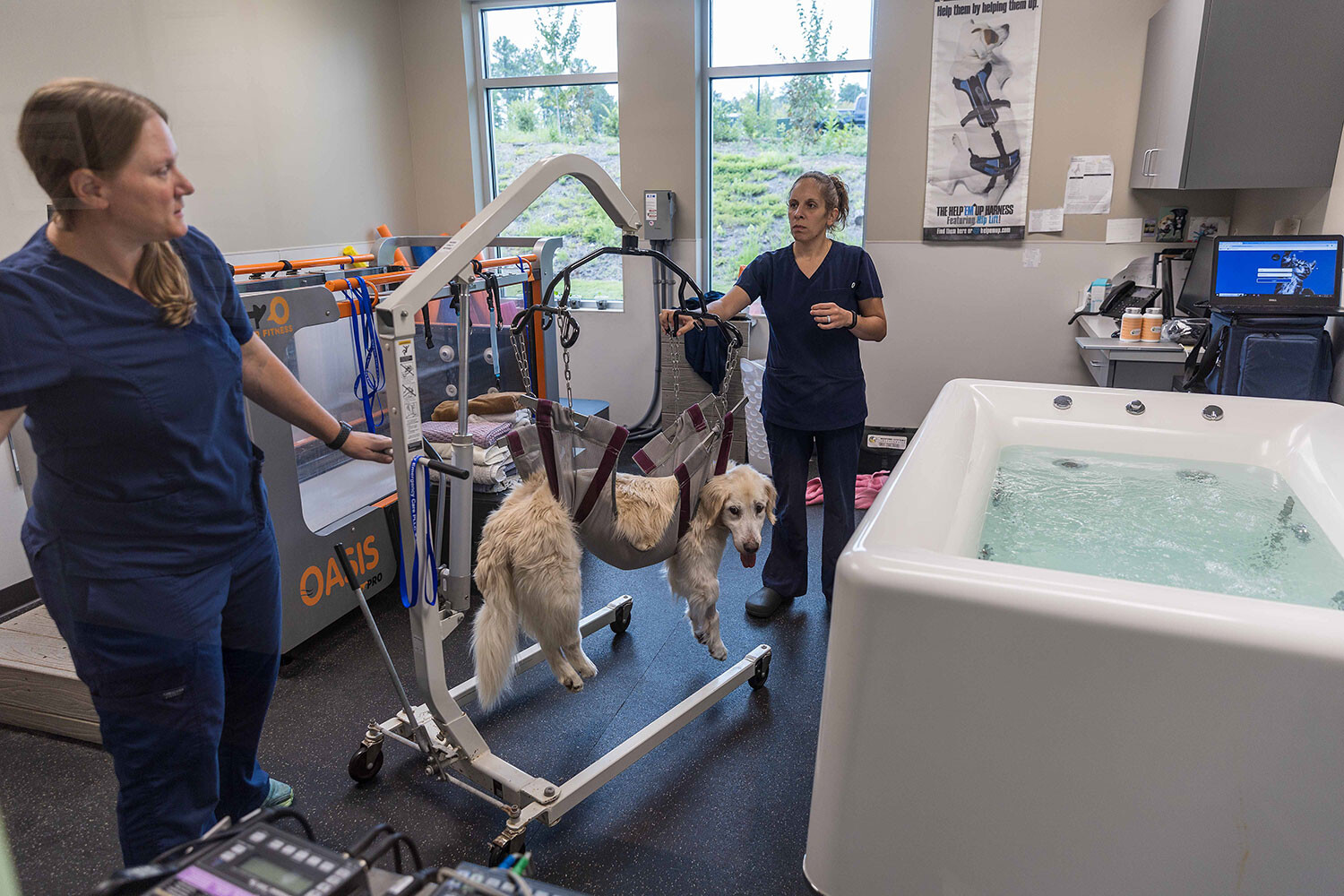If you are what you eat, does the same hold true for the companion animal at your side? The recent rise of home-cooked meals for pets certainly suggests it, with human-grade food being touted as superior to conventional pet food. Given the trend over the past few decades to treat pets more like family members and prioritize their longevity, it only makes sense that homemade foods are coming in hot.
But making pet food is also a hot topic, with perspectives varying. While the notion that consuming fresh food is beneficial to furry bodies, value systems, previous medical experiences, logic, and love all factor into a pet owner’s decision to forego kibble for kitchen prepared.
However, pet parents should be mindful of certain challenges to ensure an outcome of increased years — quality ones — to a companion animal’s life.
Taking the Dog Out of Nature … But Not Nutrition Out of the Dog
Dr. Emily Yunker, emergency veterinarian and veterinary herbalist at Veterinary Emergency Care in Cary, explains: “Dogs can’t say I’m having a craving.” This means that owners cannot determine whether all their pet’s dietary needs are being met. The impact of nutritional deficiencies can be devastating — spinal fractures, for example, aren’t unheard of. Compare the growth rate of puppies to children, and it’s easy to recognize the lasting early damage that can be done … which is even more distressing because pet parents originally commit to home-prepared meals to ensure a better quality of life for their pet at all life stages.

Dr. Emily Yunker, Veterinary Emergency Care.
But make no mistake: Cooking for your pet is what Dr. Yunker refers to as a “lifestyle choice.” If it is a commitment to implement such a change in our own diets, the choice to make homemade meals for our pets is perhaps even more of an undertaking. “I’ve done it,” Dr. Yunker shares about ensuring a complete, balanced diet for her two cats while juggling a homelife with three children and a spouse and a (very) full-time job. Time, cost, effort, diligence, and even emotional space are all factors that should be considered, according to Dr. Yunker.
Consistency is key when it comes to preparing food from home, but so is a commitment to recipe rotation so your pet doesn’t miss out on key nutrients. Dr. Yunker is clear that pet owners should consult their veterinarian prior to making any changes and continue to collaborate with them throughout the nutrition journey. She also acknowledges that conventional veterinary wisdom endorses commercial food that has been verified complete and balanced via feeding trials.
And while fresh-food diets have exploded in recent years thanks to brands looking to fill the void between the big-four pet foods studied in feeding trials and home-cooked meals, the common preparation of traditional food preserves the minerals and antioxidants that may be lost through other types of home preparation.
If you were to attempt to replicate the nutrients and minerals found in one of the big-four foods yourself, you would need to include three kinds of organ and muscle meat. The good news is that there are various ways to meet nutritional needs with, for example, vitamin pack supplements that serve as toppers to your pets’ meals.
Some of the resources Dr. Yunker suggests you vet with your vet include:
- Low-fee software Animal Diet Formulator, which assists with meal formulation and uses relevant USDA nutritional data. It also takes dogs’ and cats’ life stages and activity levels into consideration. (animaldietformulator.com)
- Dr. Harvey’s has a wide variety of meal bases, pre-mixes, and kibble-alternative complete meals. (drharveys.com)
- Balance.it offers free, instant, and customized recipes and several types of supplement packs. (balance.it)
- With Real Dog Box, you can bundle your pet’s needs into a customized and fresh discovery box that is delivered monthly to your house. Also offered is an online course that Dr. Yunker compares to the intensity of nutrition courses in veterinary school and considers a “fabulous program” for pet owners willing to dig deep into pet nutrition. (real.dog/box)
- Local favorite Unleashed, the Dog and Cat Store sells various meal toppers and has a friendly return policy should your dog turn its nose up at anything. (unleashedmutt.com)
As a vet whose first exposure to the profession came early in life thanks to a TV episode of David the Gnome during which a wire hanger was removed from a goat with surgery and complemented with acupuncture, Dr. Yunker has always imagined her career as the holistic veterinarian she is today. As she says: “There was no reason to limit myself.”
Working on the rehabilitation side of veterinary medicine allows Dr. Yunker to take an integrative approach to pet wellness for young, healthy animals and their owners who want the strongest possible start and sick pets who have complicated overlapping diseases or a cancer diagnosis and short timeline in which to implement holistic care.
This month, Dr. Yunker will start offering a package of services for her health coaching that includes a focus on diet, supplements, and herbs. For pet owner Bonnie and her 11-year-old American pit bull terrier mix, Belvedere, who has experienced several health setbacks, Dr. Yunker’s diet tweaks and supplemental tinctures have supported Bonnie in focusing on providing her beloved dog “the happiest, healthiest life.” Bonnie travels weekly from Johnston County for Belvedere’s treatment, but she is not unusual in putting the needs of her “baby” ahead of her own, highlighting why nutrition is at the fore of many owners’ minds when it comes to their pet’s long-term well-being.
Meat in the Middle
Fortunately, good eating doesn’t have to be an all-or-nothing proposition; you don’t have to pick between big-four foods and home-cooked meals. (But be sure to consult with your veterinarian before you make any changes to your pet’s diet.) While oversimplifying a meal to some greens and boiled chicken is for Dr. Yunker “so much no,” a kibble base of 85% will essentially meet nutritional goals and allow pet owners to introduce tasty toppings with the remaining 15%. Herbs and vegetables, most types of meat (though the fattiest cuts are a no-no) and cooking styles, and regular exposure to different foods (which is good for pets’ gut health) won’t likely be missed from your fridge and pantry … unless, of course, as Dr. Yunker suggests with a wry smile, your companion animal is a St. Bernard.
Dr. Yunker’s Doggy Pumpkin Spice Recipes to Try
These recipes use a specific spice blend safe for dogs. This spice blend does not include nutmeg, which can be toxic to dogs. Instead, it includes turmeric and black pepper for a little warming anti-inflammatory boost. The spice blend can be added to other foods and treats, especially during the cold seasons.
Spice Mix
3 tablespoons ground cinnamon
2 teaspoons ground ginger
1 teaspoon ground cloves
1 teaspoon ground allspice
1 ½ teaspoons turmeric
1 pinch ground black pepper
Whisk thoroughly to prevent clumping. Pour into desired jar (a small funnel can help). Label as “Doggy Pumpkin Spice Mix” and include the date. Best used within 1–2 years.
Frozen Pumpkin Spice Treats
1 cup yogurt or goat’s milk (recommended: Bones and Co. Goat Whip)
1 cup canned pumpkin puree (plain puree, not pumpkin pie filling)
1 teaspoon Spice Mix
Mix together in a bowl thoroughly.
Divide into ice tray or molds or add to your favorite slow feeder such as a Toppl®. Freeze solid. If using trays or molds, once frozen, transfer to a freezer bag or container for ease of storage.
Add to bowls as toppers or give as special frozen treats.
Baked Pumpkin Spice Cookies
2 cups oat flour (or flour of choice)
1 cup canned pumpkin puree (plain puree, not pumpkin pie filling)
½ cup real natural unsweetened xylitol-free peanut butter (or xylitol-free nut butter of choice)
2 teaspoons Spice Mix
Preheat oven to 375 degrees.
Mix together all ingredients to form dough. Reserve half the flour for dough handling. Oat flour can be particularly sticky. You may need additional flour during dough handling.
Rest dough 10 minutes. Optional: Refrigerate for 4 hours or overnight to further firm dough.
Add additional flour as needed to sticky areas.
On a floured surface, roll dough to ¼ inch thick. Cut dough into shapes using festive cookie cutters.
Bake for 15 minutes, until cooked but not yet crunchy. Optional: Turn off oven but leave cookies to sit for about an hour to fully harden. Dogs like crunchy cookies.
Fully cool before serving or storing. Store in an airtight container.
Freeze if the batch is too large to use completely in 2–3 days. Give the cookies away to friends and family!
- Pets on Parade 2024
- At Home with Amanda
- Your Happiest Place
- Making a Meal of Pet Nutrition
- Restaurant Profile: The Library Steakhouse
- Garden Adventurer: Save Those Tomatoes!
- Liquid Assets: A.P.P.Y.
- Liquid Assets: Periscope Sunrise
- Erica Chats: Go Ahead and Spoil Them!
- Small Business Spotlight: MOSA Pet Spa & Boutique
- On Trend: Bathroom Remodels
- Nonprofit Spotlight: Habitat for Humanity of Wake County
- Things to Do: October 2024
